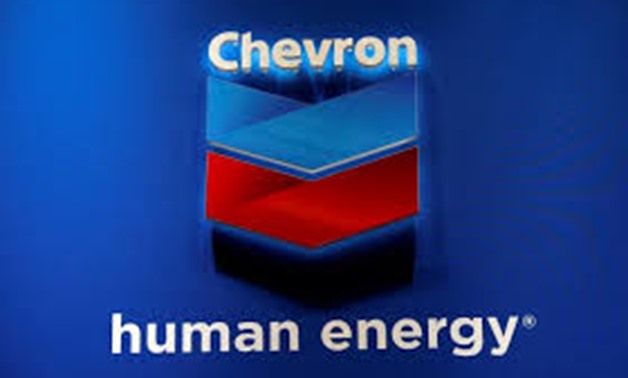
The logo of Chevron Corp is seen in its booth at Gastech, the world's biggest expo for the gas industry, in Chiba, Japan April 4, 2017. REUTERS/Toru Hanai
HOUSTON (Reuters) - More than a dozen top U.S. energy companies have pledged $100 million toward easing stresses on health care, education and civic infrastructure from the shale oil and gas boom in West Texas and New Mexico, the group said on Sunday.
Chevron, EOG Resources, Exxon Mobil and Royal Dutch Shell are among 17 companies backing the Permian Strategic Partnership, as the consortium is called, Don Evans, a former U.S. government official and energy executive helping launch the group, told Reuters on Saturday.
The group seeks to address labor and housing shortages, overtaxed health care and traffic congestion caused in part by companies descending on the Permian Basin, the nation’s largest oilfield, where they hope to pump billions of dollars’ worth of oil and gas in coming decades, experts said.
“It’s a significant amount of money, but these are huge challenges,” said Evans, a former U.S. Secretary of Commerce who lives in Midland, Texas, the epicenter of the shale oil revolution. “We don’t have enough teachers. We don’t have enough doctors.”
The group aims to work with regional and federal officials, companies, nonprofit groups and educators in New Mexico and Texas, said Evans, who started in the Permian and became CEO of producer Tom Brown Inc before joining the administration of former President George W. Bush.
The group is assembling plans to hold meetings in communities across the region, so “everyone have a voice” in the undertaking. There is no timetable or plan for how the initial contribution will be spent. The group is recruiting staff and searching for office space, he said.
In the last decade, the region’s many pockets of oil and low production costs have led to gold rush-like conditions in the Permian. Companies are pouring staff and equipment into the oilfield, which is expected to pump 3.7 million barrels of oil per day by December, four times its rate in 2010, according to the U.S. Energy Information Administration.
That boom has local employers, including restaurants and school systems, under pressure from staff leaving for oilfield jobs. Midland’s unemployment rate was 2.1 percent in October, compared to the nation’s 3.7 percent rate.
The last decade’s shale boom also has led to school overcrowding, soaring traffic fatalities, drug abuse and strains on the power grid because of the activity.
“Our roads are not designed to handle the amount of truck traffic we have,” said Jeff Walker, transportation training coordinator at New Mexico Junior College in Hobbs.
Drug charges in Midland more than doubled between 2012 and 2016, to 942 from 491, according to police data. Traffic accidents also jumped 18 percent between 2016 and 2017 in Midland County, and 29 percent in nearby Ector County, according to Texas Department of Transportation data.
“They all agree that scaling up infrastructure is going to be a huge challenge,” said Bob Peterson, a partner at consultancy Arthur D. Little who advises producers. “There’s a common agreement that there’s a whole bundle of problems.”


Comments
Leave a Comment